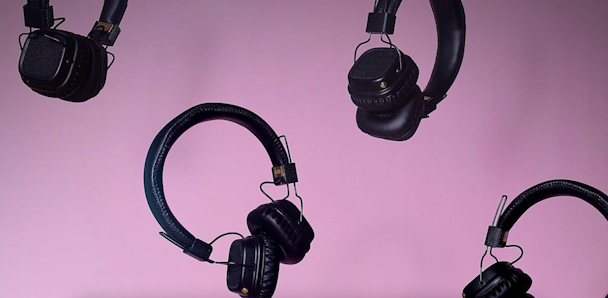What does the collision of audio formats mean for marketers?
During The Drum’s Audio Deep Dive, we’ll be exploring everything from podcasts to radio to social audio. But is there a danger in marketers thinking of audio as a single entity? How important is it to consider what the different formats mean to their listeners?

Audio marketing is a bigger opportunity than ever before, but how should marketers be thinking about it? / Insung Yoon via Unsplash
Don’t call it a comeback. Audio has never gone away as a priority for advertisers. Brands recognize the benefits of an effective piece of audio branding and the rise of new audio formats such as podcasts has only made the oldest form of communication more important. The amount of money spent by platforms like Spotify alone demonstrate the importance of audio for advertising.
Consumers now spend a third of their media time with audio in various forms. Analyst Forrester believes that podcasting will “siphon away” radio ad dollars by cutting into radio listening time, while the IAB found that 85% of total digital audio advertising revenues came from mobile listening, on devices on which all audio formats are available.
However, as those new formats arrived, the delineation of audio forms began to blur. Music, editorial content and ads co-existed on radio: now they share real estate on mobile devices with podcasts, video podcasts, social audio, audio ads in games and more. Even Netflix, synonymous with video content, is experimenting with audio by allowing users to solely listen to its shows rather than watching them.
Each format has its own strengths and unique appeal, but what does that collision of formats mean for marketers?
Come together
The IAB estimated that digital audio advertising revenue grew by 58% to $4.9bn in 2021, representing the highest year-on-year growth within the sectors it studied. While that might be a small proportion of the overall $189bn spent on digital advertising, it represents the rapid rise in interest in digital audio advertising as analytics tools become more sophisticated.
That’s driven largely by investment in podcasting from Spotify, Acast and other editorial audio platforms. At Spotify’s second Investor Day, the company said it expects ad revenue to eventually reach “significantly more than €10bn annually”. That would in turn drive the amount of advertising spend on digital audio as a whole up.
This might be why even traditional radio companies are positioning themselves to take advantage of the undifferentiated nature of digital audio. Late last year Global acquired podcast monetization platform Captivate, which has over 14,000 podcasts as part of its network.
Most importantly for Global, the company has developed a range of features that aid with some of the biggest obstacles to monetizing podcasts, from distribution to first-party attribution and promotion. Radio, podcasting and even text to speech articles are all being delivered to audiences the same way.
Acast’s UK head of sales Josh Woodhouse says of the merging of radio and podcast content: “Although podcasts do offer comprehensive coverage across all age brackets, we’ve definitely seen increases in listenership among younger audiences and ... those spending less time with commercial radios. One of the main reasons behind this – and definitely one of the reasons why I think we’ve seen a lot of radio channels move into the podcast space – is the scale of diversity and content being offered across the board.”
But while podcasting is driving the vast majority of ad spend growth and dragging other forms of digital audio along with it, the challenge for marketers is in ensuring that marketing in audio does not become anodyne and ineffective.
Get back
Paul Cranwell is vice-president of strategic partnerships at AdTonos and was previously managing director of audio agency Radio Works. He says it is vital to consider the context of audio consumption, even if it is all delivered on the same device. “If you’re buying something programmatically, you typically have no control over which channel it’s going to end up. So your campaign will end up with a certain percentage on music streaming, so much on podcasting, so much even on text to speech.
“But if you have the capability to ensure you have the right type of audio that will go into that channel, that will do it for you. It’s really just thinking about where people are going to hear it.”
So selective consideration of the medium is vital as audio formats coalesce on digital devices. Cranwell notes that while radio is still first and foremost a secondary activity, podcasting is much more of a lean-in experience and should be monetized differently – and audio ads within mobile games even more so.
As interactive audio ads come to the fore, that difference in level of interaction with audio content will deliver vastly different ROI depending on the type of audio. While podcast listeners might verbally respond to an ad, it is far less likely that a radio listener will do the same – even if both ads are delivered on the same device.
So while all forms of audio content now coexist on mobile devices, that doesn’t mean that advertisers can think of them as undifferentiated ‘audio’ to be advertised against. Just as different forms of video can be accessed through TVs, from video games to reality TV to movies, there is no one size fits all audio advertising format.
The brands that consider why their consumers are choosing to listen to different forms and adjust their advertising strategy accordingly will be the ones to succeed. And as the increase in digital audio advertising spend looks to continue for the foreseeable future, there’s a big prize to be won.
For more on the power of sound, check out The Drum’s Audio Deep Dive.

